Men’s Clipper/Skin Fade




Because his model's hair is already roughly a No.2, Rob decided to go straight in with his guideline for the fade. If it had been much longer, he would have needed to reduce this area first. Starting at the temple area, begin tracing in a guideline with a balding clipper. How high or low you go should be based on the client's bone structure.



Rob recommends that the guideline go straight back and above the occipital bone, but in his instance, he needed to curve the guideline below the occipital bone, which allowed for a more fluid fade.



So why put a line in a haircut that you intends to fade out? While its true, you can freehand fade this cut the traditional way of pitch, wiggle and rocking it out, the steps made by the clippers are just the same idea as any other haircut, they are your guideline to keep the fade consistent and even. Doing it this way is a lot more structured and achieves balance in the fade.



The next step is to create a new guideline. Using normal clippers this time, create another band of shading with the clippers set to zero and a half. Ignore the initial guideline, as you will come back to this afterwards. Try to create this as even as possible, as it is crucial to an immaculate blend.

Advertisement




This should be the result. Clear bands of shading, as even as possible.






Switching back to the zero now on the clippers, begin to “rub” the initial guideline out. You only want to flick just the line out. Short sharp movements flick the line out better than big scoops. It may take multiple angles and going against the grain to remove the line, but it will come out.




Advertisement







To erase the second guideline, switch to a No.1 guard and blend into the interior. You may need scissors as well to refine the shape. This element of the cut is vital, as you don’t want the crown shading to be too heavy, otherwise it can look like a bowl cut from a distance!



Once the guidelines have been faded out, the cut should be looking pretty good, but there’s still a lot of refining to do. You’ll notice in this image that the fade is good, but the extra length on top of the head distorts the silhouette.



The next step is to begin flattening the shape. The reason Rob used a flat top technique was to thin the hair out in a technical way that can be re-created, rather than heavily texturizing the hair. You can see by his hand placement what he wanted to achieve. He would have liked the fringe to have been longer to angle the shape upwards, but client didn't have quite enough length.

Advertisement




Working horizontally, begin flat topping the shape, from shorter at the crown to longer through the fringe. Direct the fringe area back to keep maximum length, as it's already short enough!






Redefine the shape by doing the same process vertically, just to pick up any hair you may have missed the first few passes with the clippers.



One of the most important tools when barbering is the mirror. At this stage you want to check the balance of the cut from multiple angles by maneuvering the head, and checking the shape from afar.

Advertisement




For his client, he decided to flatten in the corners to create a slimmer flat top, rather than keep it too square.



The last three percent of this cut is the hardest, and takes concentration and a good eye for detail. You want to analyze the silhouette and look for any areas that stop the shape from looking fluid.



The edges and neckline are finished off with a foil shaver for a cleaner finish.




Advertisement




Here is the final result. A clean fade into a modern version of the flat top. Very easy to style and very masculine.


Men’s Clipper/Skin Fade
As men’s barbering continues to grow in popularity, it’s important to master the clippers as much as your shears. This classic, modern cut utilizes a flat top technique, as well as freehand scissor work to create the short, trim back and sides, and flattened top. The bald fade/modern flat top is a haircut that requires discipline and an understanding of facial anatomy. This cut can be very unforgiving if the bone structure isn’t taken into consideration. All of the hair needs to be clipped immaculately onto the head to create a fluid shape from the occipital bone through to the fringe area. The finished look is edgy, yet wearable. Here’s how to create this trendy look on your male clientele.
Who did it
Hair: Rob Mason, MORRIS MOTLEY, Melbourne, Australia.
Learn how-to create a Men’s Prohibition Undercut from Rob!
Check out more of Rob’s work on Instragram #morrismotley!
Get even more tips and tricks from Schorem founders Leen and Bertus!
HOW-TO STEPS 
-
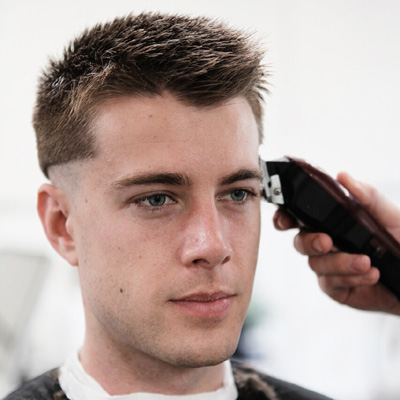
 1
1Because his model’s hair is already roughly a No.2, Rob decided to go straight in with his guideline for the fade. If it had been much longer, he would have needed to reduce this area first. Starting at the temple area, begin tracing in a guideline with a balding clipper. How high or low you go should be based on the client’s bone structure.
-

 2
2Rob recommends that the guideline go straight back and above the occipital bone, but in his instance, he needed to curve the guideline below the occipital bone, which allowed for a more fluid fade.
-
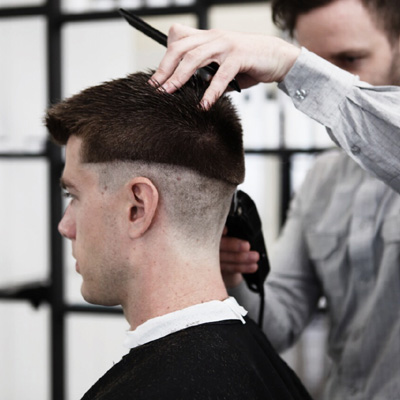
 3
3So why put a line in a haircut that you intends to fade out? While its true, you can freehand fade this cut the traditional way of pitch, wiggle and rocking it out, the steps made by the clippers are just the same idea as any other haircut, they are your guideline to keep the fade consistent and even. Doing it this way is a lot more structured and achieves balance in the fade.
-
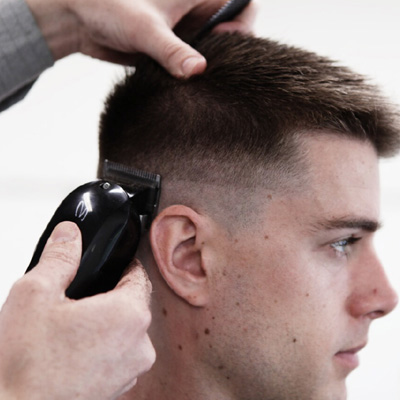
 4
4The next step is to create a new guideline. Using normal clippers this time, create another band of shading with the clippers set to zero and a half. Ignore the initial guideline, as you will come back to this afterwards. Try to create this as even as possible, as it is crucial to an immaculate blend.
-
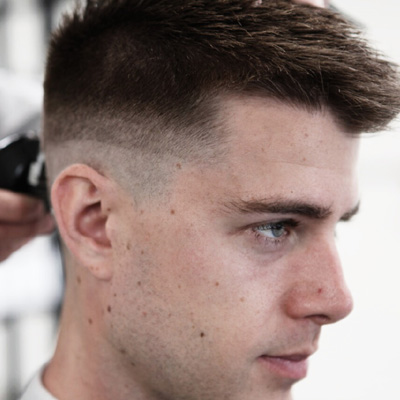
 5
5This should be the result. Clear bands of shading, as even as possible.
-
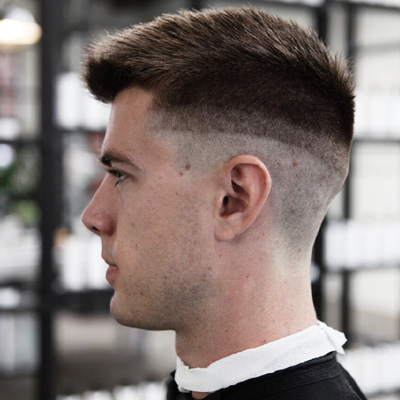
 6
6 -
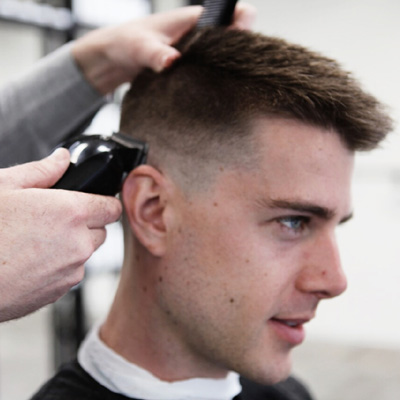
 7
7Switching back to the zero now on the clippers, begin to “rub” the initial guideline out. You only want to flick just the line out. Short sharp movements flick the line out better than big scoops. It may take multiple angles and going against the grain to remove the line, but it will come out.
-

 8
8 -
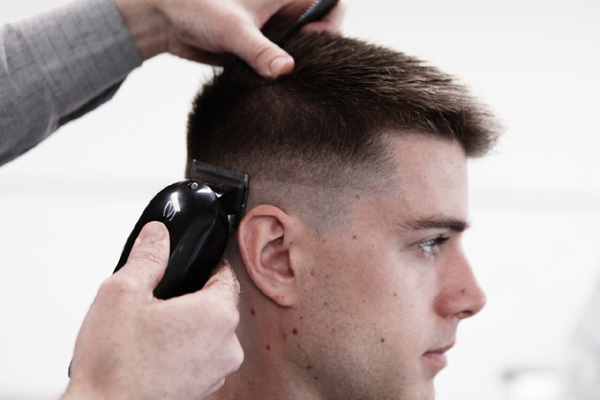
 9
9 -

 10
10To erase the second guideline, switch to a No.1 guard and blend into the interior. You may need scissors as well to refine the shape. This element of the cut is vital, as you don’t want the crown shading to be too heavy, otherwise it can look like a bowl cut from a distance!
-

 11
11Once the guidelines have been faded out, the cut should be looking pretty good, but there’s still a lot of refining to do. You’ll notice in this image that the fade is good, but the extra length on top of the head distorts the silhouette.
-

 12
12The next step is to begin flattening the shape. The reason Rob used a flat top technique was to thin the hair out in a technical way that can be re-created, rather than heavily texturizing the hair. You can see by his hand placement what he wanted to achieve. He would have liked the fringe to have been longer to angle the shape upwards, but client didn’t have quite enough length.
-
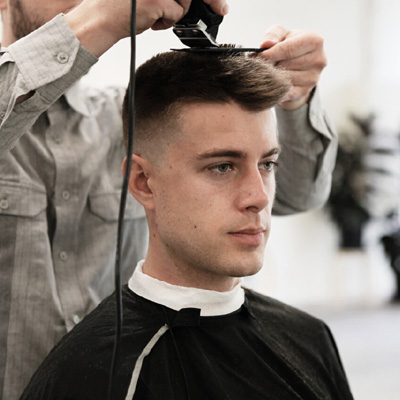
 13
13Working horizontally, begin flat topping the shape, from shorter at the crown to longer through the fringe. Direct the fringe area back to keep maximum length, as it’s already short enough!
-

 14
14 -

 15
15Redefine the shape by doing the same process vertically, just to pick up any hair you may have missed the first few passes with the clippers.
-
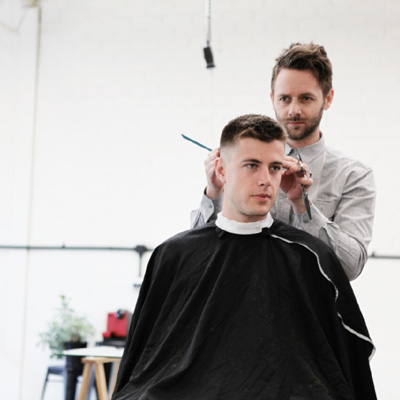
 16
16One of the most important tools when barbering is the mirror. At this stage you want to check the balance of the cut from multiple angles by maneuvering the head, and checking the shape from afar.
-
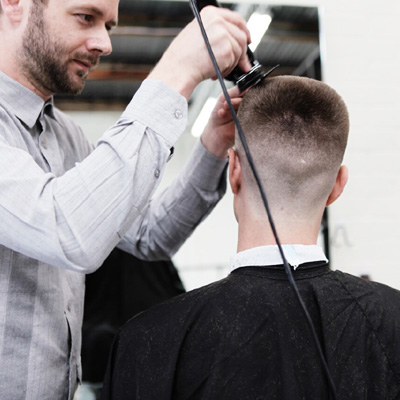
 17
17For his client, he decided to flatten in the corners to create a slimmer flat top, rather than keep it too square.
-
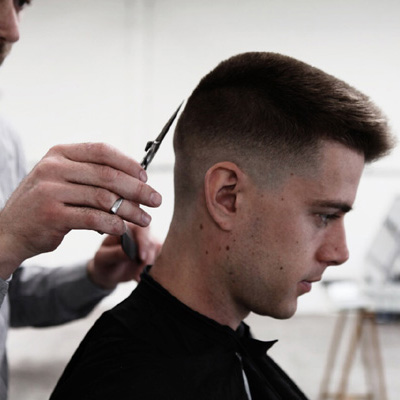
 18
18The last three percent of this cut is the hardest, and takes concentration and a good eye for detail. You want to analyze the silhouette and look for any areas that stop the shape from looking fluid.
-

 19
19The edges and neckline are finished off with a foil shaver for a cleaner finish.
-
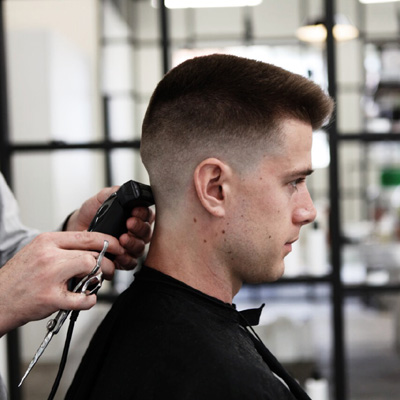
 20
20 -

 21
21Here is the final result. A clean fade into a modern version of the flat top. Very easy to style and very masculine.
YOU MIGHT LIKE THIS
-
Barbering
Razor-Cut Texture + Taper Fade
-
Hair
Classic Crop Fade
-
Barbering
Textured Pomp + Low Fade
-
Barbering
Low Drop Fade
-
Barbering
Soft Crown Layers + Clipper-Cut Fade


TRENDING NOW!
-
BTC Hair Trend Report
The Biggest Haircut Trends of 2024
-
Copper
What Is The "Cowboy Copper" Hair Trend? Here's What It Really Means...
-
Bobs
How to Avoid a Bulky Bob: 4 Techniques To Try
-
Uncategorized
TikTok's Viral "Scandinavian Hairline" Is Actually Not New...
-
Hair Color
WWYD: How To Stop Your 6N From Turning Orange
-
Celebrity
10 BIPOC Celebrity Hairstylists Who Are Making Major Waves In The Industry Right Now
-
Glossing/ Toning
How To Achieve "Glass Hair": Smart Hacks From Hairdressers
-
Curly
Long Layers: 10 Pro Tips + Common Cutting Mistakes




